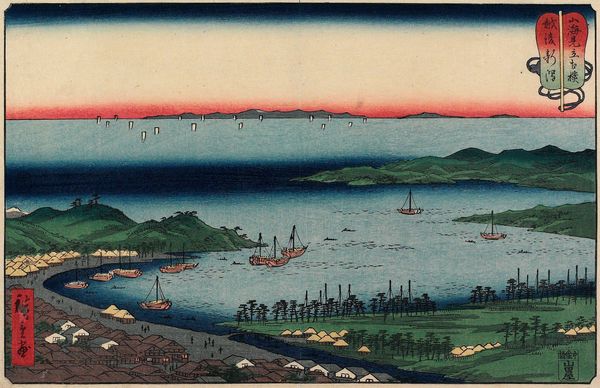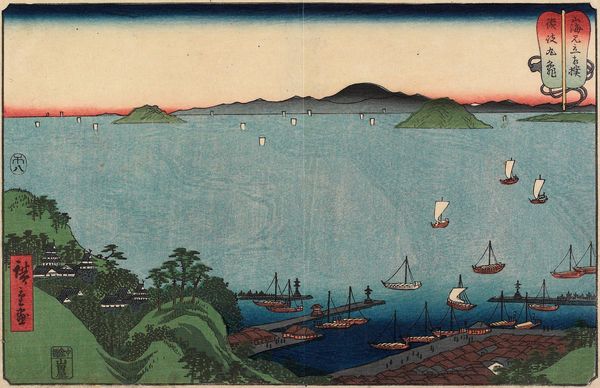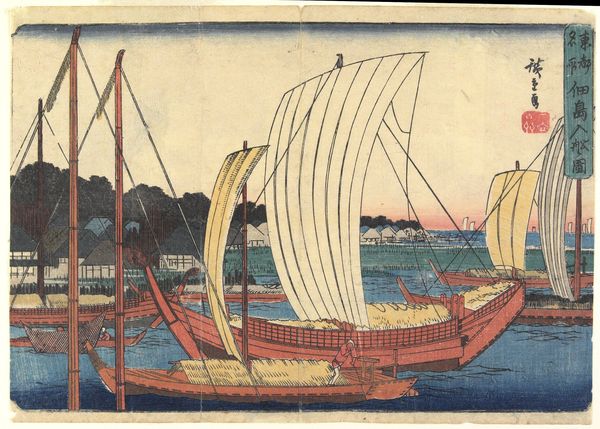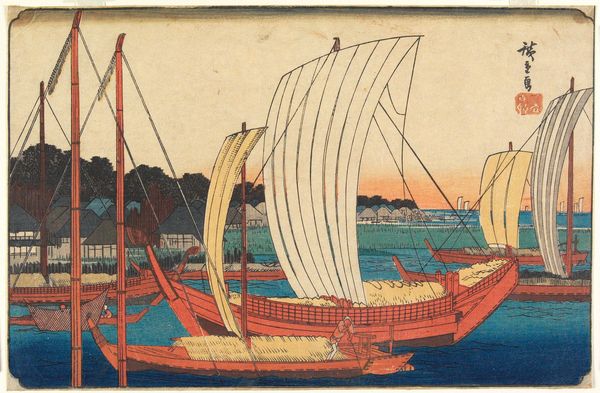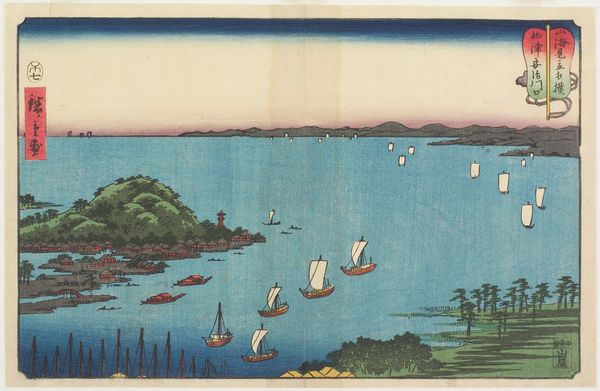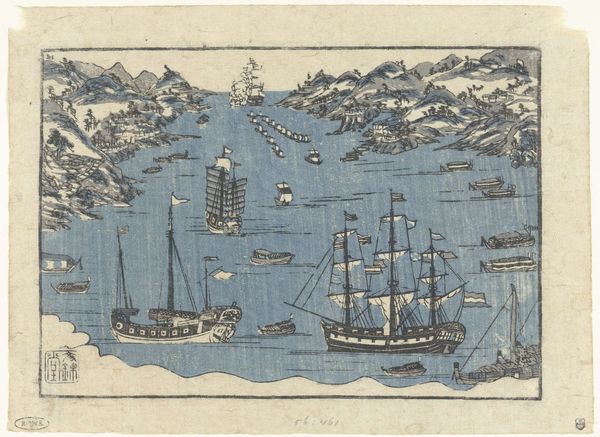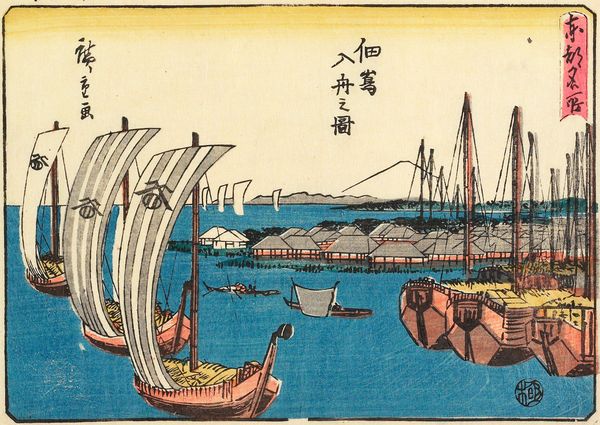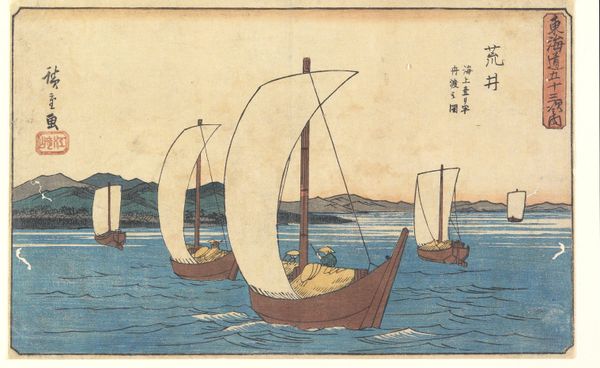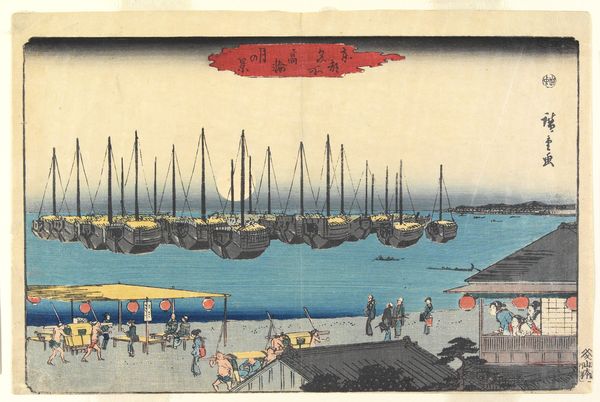
print, ink, woodblock-print
# print
#
asian-art
#
landscape
#
ukiyo-e
#
ink
#
woodblock-print
#
cityscape
Dimensions: 8 11/16 × 13 9/16 in. (22 × 34.4 cm) (image, horizontal ōban)
Copyright: Public Domain
Editor: Here we have Hiroshige's woodblock print, "Uraga in Sagami Province," likely from 1858. What strikes me is the sheer number of boats, how they dominate the scene. It almost feels like the landscape is secondary. What do you see in this piece from a formalist perspective? Curator: The organization of space is key. Notice how Hiroshige employs a high horizon line, compressing the land and expanding the volume of water. This flattening effect, combined with the careful placement of the boats, creates a dynamic interplay between depth and surface. The use of color is also noteworthy; the graded blues of the water subtly shift the mood of the artwork. Editor: I hadn't really considered the horizon line and how it influences the feeling of the picture. Are the boats arranged in a deliberate pattern, do you think? Curator: Precisely. The composition isn't random; the positioning and repetition of the boats establish a rhythm. Examine the masts. They create a series of vertical lines that are visually arresting. Then, the subtle variations in their sails prevent absolute monotony, so a semiotic interpretation allows a nuanced comprehension of the author's intentions. Can you appreciate how each decision impacts the image's totality? Editor: So, the visual components themselves create the meaning, independent of outside factors? That is different. I typically attempt to identify the cultural intentions, but with this artwork, that approach may need to be updated to focus on technique and design. Curator: That's it. This is formalism at its finest, emphasizing the artistic elements as autonomous and self-referential units. We achieve meaning through careful evaluation of their visual attributes and the arrangement in relationship with each other. It offers a fresh perspective when deciphering artwork. Editor: Okay, that really clarifies how a formalist reading of art operates. I am very thankful. Curator: Absolutely. And by acknowledging that artwork can operate at different levels of representation or abstraction, and how various visual choices produce specific aesthetic effects, we begin the trip towards more informed art appreciation.
Comments
No comments
Be the first to comment and join the conversation on the ultimate creative platform.
